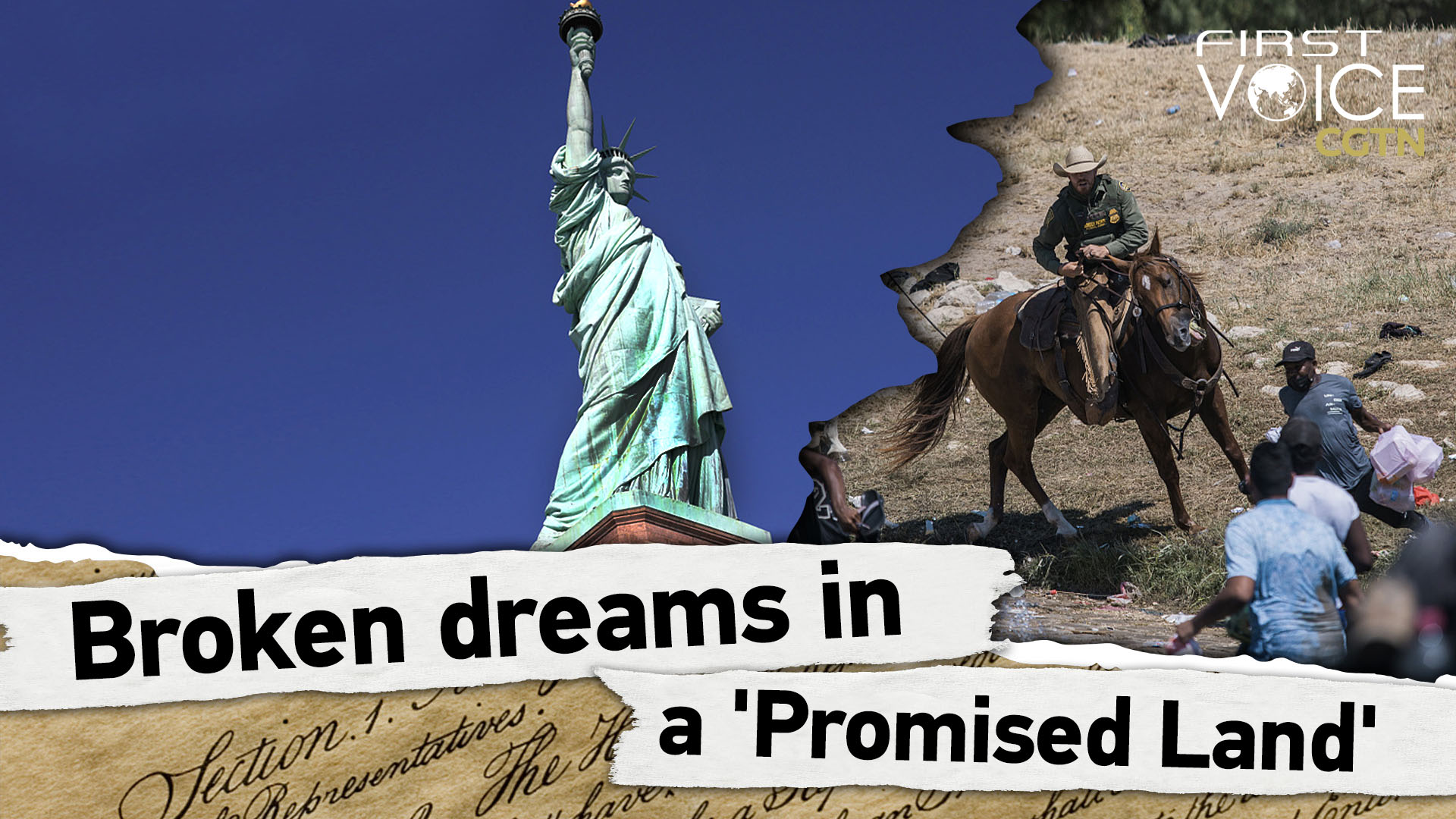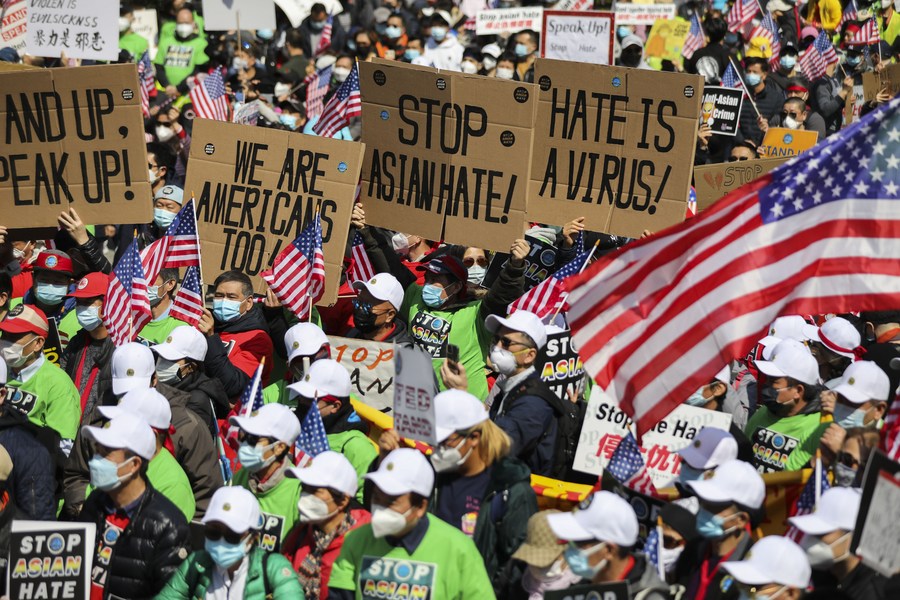
Editor's note: Wretched City upon a Hill is a 10-part series examining the clash between America's cherished beliefs about its democracy and the jarring truth about how the system fails in practice. The fourth essay is about immigrants in America.
At the beginning of the 17th century, the Puritans found a haven in North America. The Mayflower and other ships brought them across the Atlantic Ocean, away from religious persecution in Europe. In the centuries since, millions of immigrants in pursuit of American Dream headed to the "promised land" of the United States, a symbol of freedom, equality, and opportunity.
Some lucky ones did find success, but for many, the American Dream vanished, leaving only harsh reality. Jair, Yovani and Misael, three young men from a village in Mexico, were found dead in an abandoned airless trailer on a desolate road in San Antonio when they tried to go north to Austin, Texas.
Geremias Romero was born and raised in the U.S., but was unable to find a teaching job due to bigotry because his parents are Salvadoran. He ended up working in the fields for $8.25 an hour to support himself.
Ma Guiying from Fushun, Northeastern China had been working hard in the U.S. for years with her husband to pay for their children's education. She ended up killed on the streets of New York City in an anti-Asian assault.
Xenophobia, racism and structural inequalities mean the journey to American Dream is doomed to fail for all but the luckiest immigrants. A soaring cost of living, rising racist sentiments, and hostile immigration policies in recent years have made things worse for immigrants.
The U.S. is a country founded by immigrants, but xenophobia and racism have been present throughout the American history, inflicting great physical and mental pain on immigrants. More than 80 million immigrants have come to the U.S. in the past 200 years, but the government has deported at least 57 million immigrants since 1892 – more than any other country.
In the 19th century, immigrants from Ireland, Germany, and China triggered anti-immigrant sentiments among Americans – mainly Anglo-Saxon Protestants. The native-born Americans considered immigrants to be undesirable. Irish Catholics were particularly attacked. In the Bible Riots of 1844, fierce fighting broke out between nativist groups in Philadelphia and Irish Catholics, destroying two Catholic churches and other buildings.
Native-born White Americans were unhappy about economic competition brought by Chinese immigrants, and treated Chinese as inferior. The 1882 Chinese Exclusion Act imposed a 10-year ban on Chinese immigrants, prohibiting them from becoming U.S. citizens. This coincided with rampant anti-Chinese violence.
Today, rural Whites are witnessing their economic and social status declining with the stratifying U.S. economy. This has stoked a rise in White supremacy and xenophobia in American society. Immigrants and their descendants are the victims. Anti-Semitic sentiment in the U.S. is on the rise. In 2021, the U.S. recorded 2,717 assaults against the Jewish community, the highest number on record. During the pandemic, anti-Asian hate crimes in the U.S. surged, with an increase of 77 percent from 2019 to 2020. More than 9,000 anti-Asian hate incidents were self-reported to STOP AAPI Hate, an advocacy group, from March 2020 to June 2021.
According to an NPR poll in 2022, U.S. support for immigration is declining, and a considerable percentage of Americans view immigration from South America as an "invasion" at the southern U.S. border. Rising xenophobia and frequent hate crimes have imposed tremendous pressure on immigrants, making it harder for them to integrate into American society.

People rally to protest against anti-Asian hate crimes on Foley Square in New York, the United States, April 4, 2021. /Xinhua
People rally to protest against anti-Asian hate crimes on Foley Square in New York, the United States, April 4, 2021. /Xinhua
Systemic racial discrimination and structural inequality mean that immigrants must make extra efforts to succeed. There is a ceiling to what they can achieve. Some minority groups have gained equal lawful rights with White Americans through unremitting efforts, on paper at least. But racism and inequality are still deeply rooted in the economic, judicial, and educational systems of American society. Immigrants encounter frequent discrimination from police, banks, schools, corporations, and government agencies.
Studies have found that White children from low-income families are more likely to get government benefits than their Black counterparts. When Black and Asian Americans change their resumes by using names that sound like White Americans, they get more interviews. As an important part of the U.S. workforce, immigrants are mostly found in non-management positions, in the agriculture, forestry, waste management, maintenance services, construction, catering and hospitality sectors.
College-educated immigrants face obstacles in employment. Their education and work experience in their home country are often unrecognized in the U.S. This, as well as cultural differences in the interview process, makes it difficult for them to find jobs that match their education and experience. In 2018 alone, there were approximately 2.2 million college-educated immigrants who were unemployed or occupied in low-skilled jobs including dishwashing, security, and cab driving – a huge waste of human potential.
It takes several generations on average for immigrants to make their way to the middle class or beyond in the United States. The first generation has to overcome linguistic and cultural differences, do low-paying jobs disliked by White Americans, and live in their own ethnic neighborhoods for a greater sense of safety. Their children who grew up or were born in the U.S. have no language barrier, but they still need to overcome identity crises and make extraordinary efforts to bridge the gap with their White peers in educational resources, social capital, and wealth.
The situation for undocumented immigrants is even worse. After the hardship of arriving in the U.S., they live in constant fear of being reported and deported, and are more likely to be discriminated against at work and suffer from racial or sexual harassment. Their children may one day witness the parents being deported or arrested, and live in the U.S. on their own.
In 1931, American author James Adams wrote in his book The Epic of America that the American Dream was not just a dream of more material wealth, but also "a dream of a social order in which each man and each woman shall be able to attain to the fullest statute of which they are innately capable, and be recognized by others for what they are, regardless of the fortuitous circumstances of birth or position."
However, the personal experiences of immigrants in the U.S. over the years have de-romanticized this dream and revealed the pain and suffering behind it. With deep-rooted racism, structural inequality, and rising xenophobia in the U.S., immigrants quickly wake up from their dream of equality and golden opportunities.
(The author, Yu Feng, is an assistant research fellow at the Institute of American Studies, Chinese Academy of Social Sciences. If you want to contribute and have specific expertise, please contact us at opinions@cgtn.com. Follow @thouse_opinions on Twitter to discover the latest commentaries in the CGTN Opinion Section.)